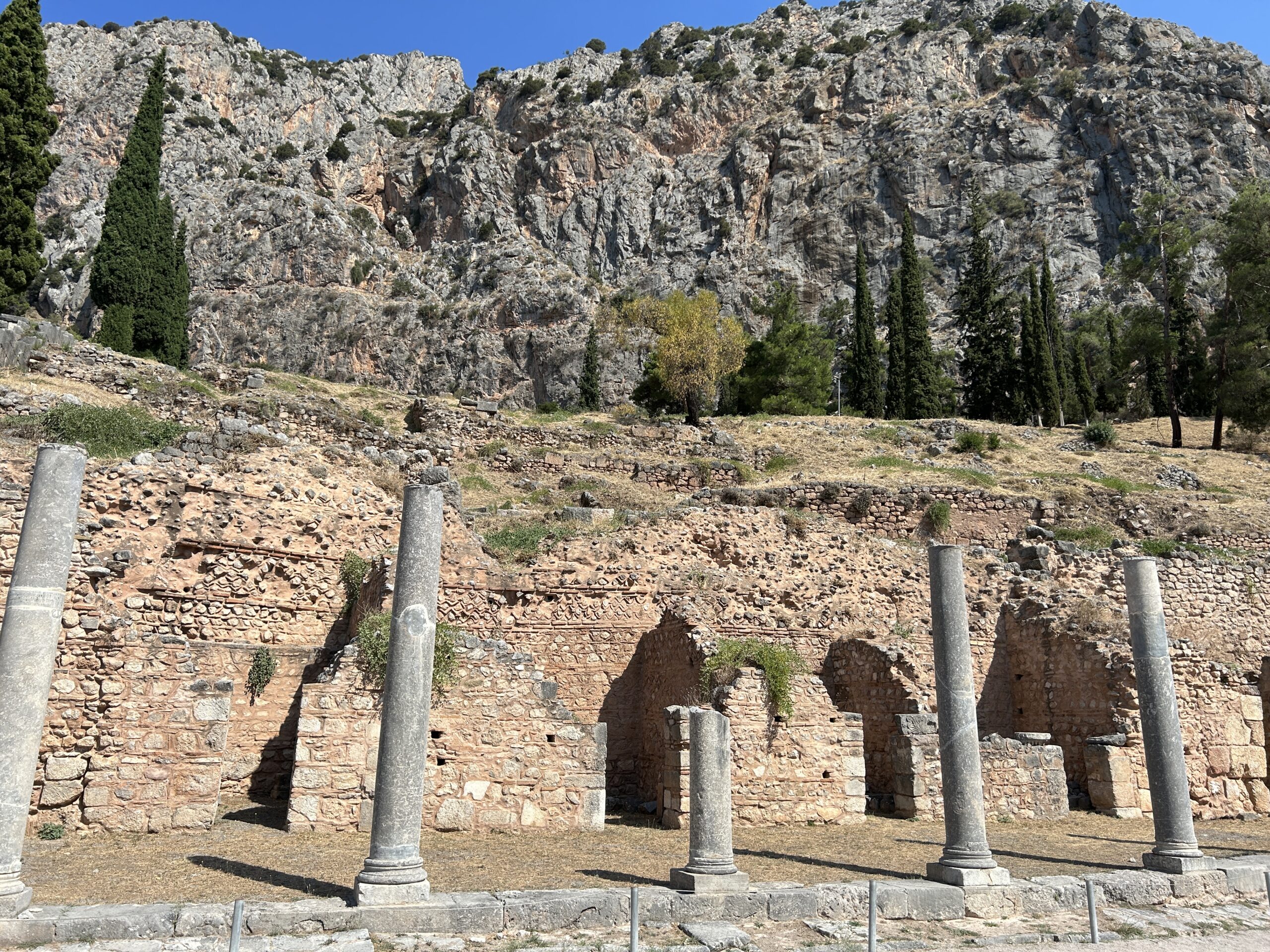We hired a guide to drive us to the ancient religious site of Delphi. We split the van with a family from Mexico. We did not say much to each other, and they dozed off quickly. I expected our guide to explain things, but he popped in earbuds and mostly ignored us.
Our friend Joe decided to have a coffee that morning. He does not drink coffee, and the caffeine jolt ensured he did not stop talking for the entire 2.5-hour drive to the site. I had daydreams of cartoonishly strangling him in the van. Luckily, we made it to the town of Arachova without bloodshed.
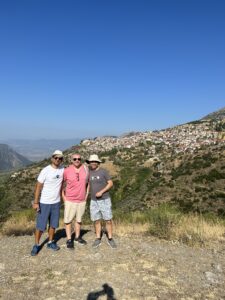
The best bite of food I had in Greece was in this small town. The driver dropped us on one end of town, letting us meander the main street. Arachova is a long and narrow town that hugs the mountainside, so everything seems to center along the main street, passing through the town. On the way, we stopped at a place called Christoforidis’ Workshop (ΕΡΓΑΣΤΗΡΙ Χριστοφορίδης). On one side, they sell little trinkets for tourists, but on the other, there is a bakery selling spinach or cheese pies and coffee. The spinach pie I had was fantastic. The filo dough was flaky and crisp, and the filling didn’t make everything soggy. If you find yourself in Arachova, look up Christoforidis and eat there. It is delicious.
Delphi is one of those spots where history is nearly overwhelming when you are in it. Delphi was founded in the 8th century BCE. However, there is evidence of humans at the spot as far back as 1600-1100 BCE. Delphi is the definition of ancient, and the ceremonial and influential decisions made there were massive. Here sat the famous Oracle of Delphi, a woman the priestly class (men) kept high as a kite on volcanic fumes so that she would babble something and they could interpret for those who came to seek guidance or prophecy.
Religion and myth are unique lenses through which to interpret history. It’s different from military history, which has numbers and typically precise dates. In Delphi, you are in one of history’s longest-standing and concentrated religious sites. It’s unfathomable to imagine the number of people who pilgrimaged there to plead for help or make sense of the world. It’s a vortex of human faith spanning time, and when you begin to consider it while you are there, it’s infinitely vast.
It was nearing 100° (F) while we were at the site, and even in the mountains, it was insufferable. The landscape isn’t exceptionally forgiving, and there are few trees for shade. The theater is awe-inspiring for being 2500 years old. The most important temple at Delphi is that of Apollo. I was always fascinated with Apollo when I was in school. As a myth, I always thought he had similarities to some Hindu deities and would be prime for comparative studies, but I’ve forgotten all those theories. I thought it was cool that he openly had male lovers, the most famous being Prince Hyacinth, whom Apollo memorialized by creating the flower of the same name. If you are interested in more, look up the myths of Cyparissus and Branchus.
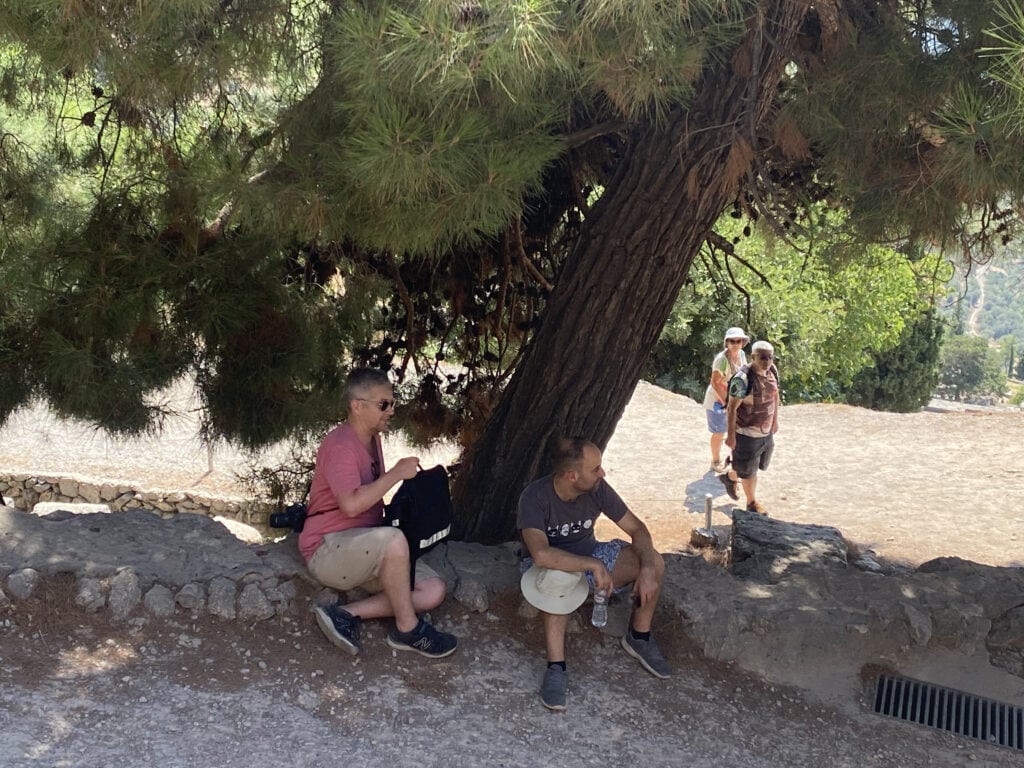
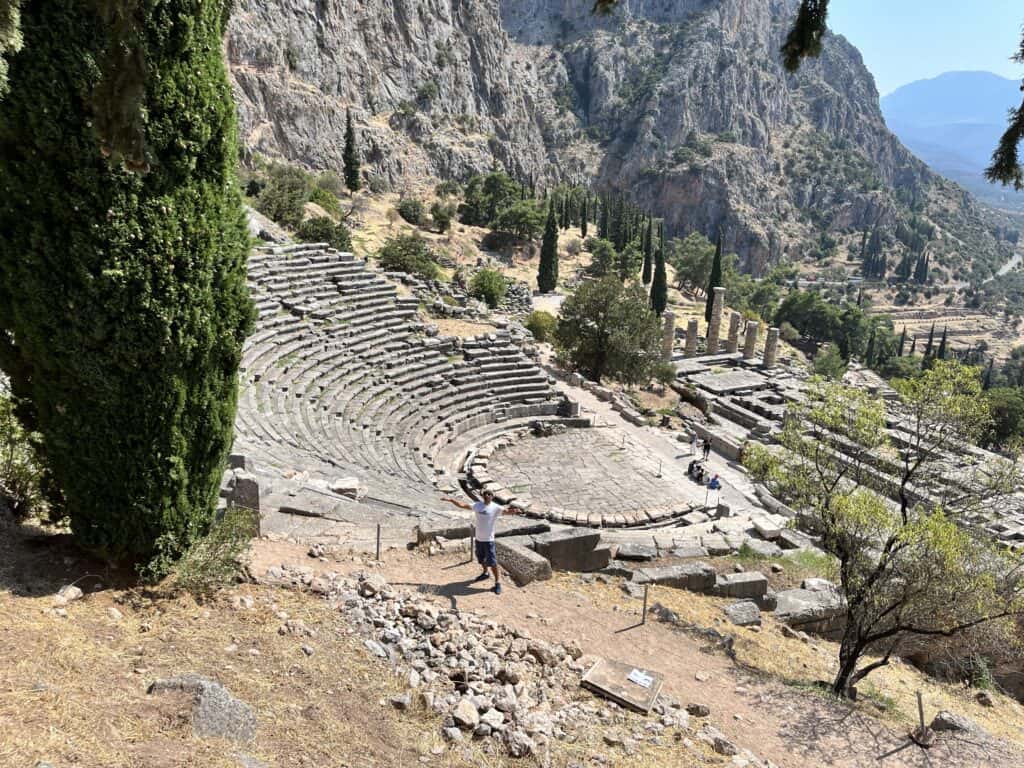
The Delphi museum is very nice, and the air conditioning is a godsend. There are a lot of artifacts from the site in it, but we didn’t leave enough time to steep in all of it. The Sphinx of Naxians stands out because of its beauty and because Naxos was the next day’s destination—a bit of unplanned foreshadowing for our trip.
The guide took us to a restaurant whose name has been lost. I did not note it while there, but it was beautifully shaded and overlooked the valley. I wish I could remember it, but it served traditional Greek food. It was quite nice. After lunch, we made our way to the Corycian Cave. This is an ancient religious site on the slopes of Mount Parnassus in central Greece, dating back to 12,000 years ago. It’s old, but people have known about it long. People hike to it now, but the rise of neo-paganism means new believers return to it for ceremonies.
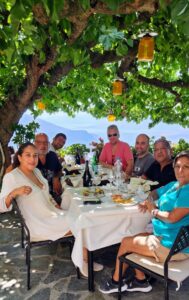
On the drive home, we stopped by a site for the Battle of Thermopylae. Frankly, I find military history boring. I had never seen the movie 300, and the legendary tale of Spartan bravery is dull to me, but if you are in Greece, some guide will tell you about it. We did learn that the battle was not just the Spartans, and the Thespians played a major role. Our van started to overheat on the drive home, and we had to stop three or four times to let it cool down on the side of the road. This tour was not cheap, so I was a little annoyed by the time we got back.
The family in the van with us stayed near Monastiraki Square, so we jumped out there and walked home. It was nice to cut through the streets and feel the buzz of the city. That night, we grabbed dinner at a bar on Geor. Olimpiou Street. It’s a pedestrian-only street near our house. The crowd seemed young and hip, so we didn’t last long. Samer picked the place, and Joe and I were skeptical, but it was quite good. We had a delicious sausage. Our dining experience was improving.
